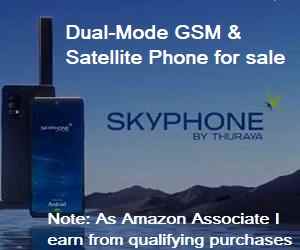TX freq 29.5 - 30 GHz
RX freq 19.7 - 20.2 GHz
Coax cable frequencies:
RX 300-800 MHz. model TR4000N-10
RX 1000 - 1500 MHz. model RM4200N-10
TX 1800 - 2300 MHz.
Regarding the cable:
DC resistance maximum value = 2.27 Ohms
Attenuation maximum values 9.17 dB at 1000 MHz and 14.3 dB at 2200 MHz
Using good copper core cables, properly terminated, maximum lengths.
30 m using RG59 Cable
50 m using RG 6 Cable
100 m using RG 11 Cable.
If you want to view the spectrum in the cable with a high loss coupler make sure not to short circuit the cable or allow 30V DC to the spectrum analyser.
Any measured spectrums please tell me your location and sent to
eric@satsig.netThere are four beam colours and I think these refer to four different frequency usages, to minimise interference between beams:
For example:
19.7-19.95 RHCP 29.5-29.75 LHCP
19.95-20.2 RHCP 29.75-30 LHCP
19.7-19.95 LHCP 29.5-29.75 RHCP
19.95-20.2 LHCP 29.75-30 RHCP
This arrangement provides 250 MHz bandwidth per beam.
Considering the receive spectrum you will probably see several steady carriers, each 27 MHz wide with bit rate 67 Mbit/s in clear sky. Towards beam edge locations, you should see lower level carriers in the adjacent beams.
On transmit, you may see fast transient, narrower bandwidth, bursts, whenever your site transmits.
Your receive C/N depends on the signal in the air as it arrives at your dish plus the G/T of your terminal. The G/T depends on dish gain and receive noise temperature of the LNB. 75cm dish has G/T=+17 dB/K. The C/N is hardly affected by cable length, until you go beyond the extreme maximum lengths. If you have too high DC resistance, ant thus low supply volts/amps at the dish, the transmit and receive qualities will both deteriorate.


